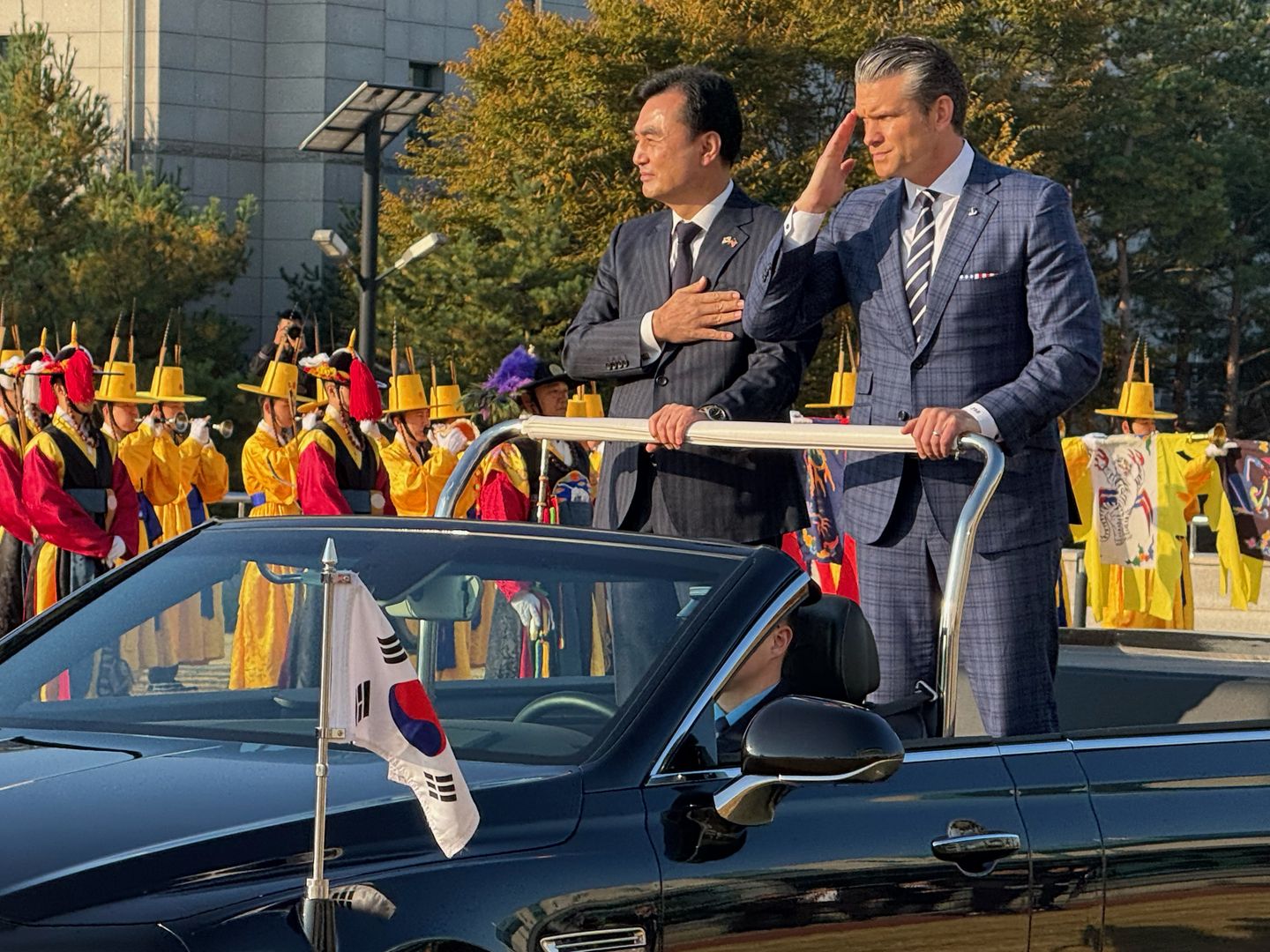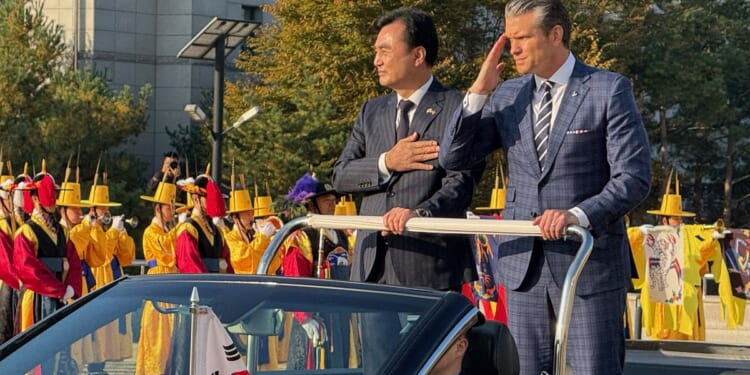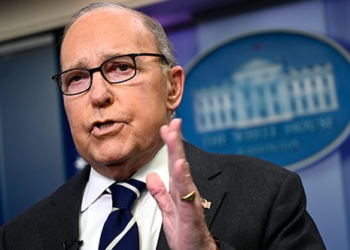
SEOUL, South Korea — U.S. military forces in South Korea could be used outside the peninsula if a conflict erupts with China, but the main focus of those troops now is confronting threats from North Korea, Defense Secretary Pete Hegseth said Tuesday.
The defense secretary told reporters after high-level U.S.-South Korea defense and military talks that the core of the alliance is “holding the line protecting our ally from the DPRK. That is what we have been and continue to be oriented on.
“But there is no doubt flexibility for regional contingencies is something we would take a look at,” he said during a press conference at South Korea’s Defense Ministry.
Mr. Hegseth spoke after talks with South Korean Defense Minister Ahn Gyu-back and senior U.S. and South Korean generals and admirals at the annual security meeting.
Neither side was able to complete a joint statement at the close of the talks, but officials announced that a final communique with significant alliance developments would be disclosed in the coming days. The communique could result in a commitment from Seoul to increase its annual defense spending.
The Trump administration has been pressing U.S. allies to sharply increase defense spending to reduce U.S. costs.
The use of American troops in South Korea for regional conflicts would be a new mission.
In May, the Defense Ministry said all U.S. troops on the peninsula are for the defense of South Korea.
On Monday, however, Gen. Dan Caine, chairman of the Joint Chiefs of Staff, and South Korean Joint Chiefs Chairman Gen. Jin Yong-sung issued a statement after separate military talks that suggests greater out-of-area operations for forces under the command, known as U.S. Forces Korea.
The joint statement said both generals “acknowledged that deterrence extends beyond the Korean Peninsula and contributes to regional deterrence in support of security, freedom and prosperity.”
Pentagon war planners and U.S. military commanders outside South Korea have voiced growing fears over China’s large-scale military buildup and increasingly aggressive military operations near Taiwan and in the South China Sea.
Adm. Sam Paparo, head of the Indo-Pacific Command, took part in the talks. He has said the Chinese People’s Liberation Army has moved beyond mere exercises around Taiwan. The large operations by PLA warships and warplanes are rehearsals for an invasion, he said.
Mr. Hegseth said his visit Monday to the heavily fortified Demilitarized Zone separating North and South Korea highlights the North Korean threat and the need to be prepared for any crisis or conflict.
“We are focused on standing by our allies here, ensuring the threat of the DPRK is not a threat to the Republic of Korea,” he said, using the acronym for North Korea, formally known as the Democratic People’s Republic of Korea, and the formal name of South Korea.
The U.S. military also continues to extend nuclear deterrence to South Korea, including through a U.S.-South Korean program that seeks to integrate conventional South Korean forces with U.S. nuclear capabilities, Mr. Hegseth said.
Mr. Ahn, the defense minister, was asked about the U.S. Energy Department’s designation of South Korea in January as a “sensitive country” over concerns that Seoul was considering developing its own nuclear weapons.
“Our commitment to the denuclearization on the Korean Peninsula remains unwavering,” Mr. Ahn said.
South Korea is a signatory of the Nuclear Non-Proliferation Treaty and therefore will not acquire or develop nuclear weapons, he said.
On the question of whether South Korea could deploy U.S. tactical nuclear weapons to counter growing North Korean nuclear threats, Mr. Ahn sidestepped the question and suggested that the NPT banned the deployment.
The South Korean military, he said, continues to work with the U.S. military in a program called the Nuclear Consultative Group to strengthen the alliance and enhance extended deterrence.
The two militaries are also engaged in the conventional-nuclear integration program, which has held tabletop exercises aimed at improving decision-making for potential nuclear conflicts.
“There is a strong need for us to combine the use of Korean conventional forces and the United States nuclear capabilities, resulting in a conventional nuclear integration,” Mr. Ahn said.
Mr. Hegseth said in his comments about using American forces in South Korea outside the country that the U.S. stands with its allies.
“There are also a lot of threats in the world we’re prepared for them, and we’ve had a lot of good faith conversations centered around ensuring that the ROK is able to, as we move forward, work with them to lead the conventional defense here on the Korean Peninsula against North Korea.”
The Pentagon is working on a concept called strategic flexibility, which envisions South Korea’s increasingly powerful military forces playing a major role in defending against North Korea.
That would allow some of the 28,000 U.S. troops in South Korea to participate in or support regional conflicts outside the country, such as in the South China Sea, the Taiwan Strait or the East China Sea.
In addition to aggressive military drills near Taiwan, China is conducting aggressive and provocative naval and coast guard harassment of Philippine naval vessels as part of a dispute over the control of resource-rich disputed islands in the South China Sea.
Farther north, Chinese and Japanese coast guard ships conduct frequent maritime confrontations as China claims sovereignty over Japan’s uninhabited Senkaku Islands. The islands are said to be rich in underwater gas and oil deposits, which are essential for both nations’ economies.
Unlike Japan and Australia, which have signaled a willingness to participate in a U.S.-led military defense of Taiwan, South Korea, under newly elected liberal President Lee Jae-myung, has sought closer ties with China rather than Taiwan.
Mr. Lee recently met with Chinese President Xi Jinping, who had been visiting South Korea for talks with President Trump.
As Mr. Hegseth and about two dozen aides and security personnel arrived by motorcade at the Defense Ministry, a group of pro-China demonstrators was stationed across the street. Many carried signs protesting U.S. military involvement in the Taiwan Strait.
One sign, displayed in both Korean and English, said, “Strategic flexibility is illegal.”
Mr. Hegseth said during the press conference that both countries face a dangerous security environment.
“During the security consultative meeting, Minister Ahn and I agreed to remain clear-eyed about the threats that we face,” he said.
“We need to increase our defense cooperation by taking a commonsense approach that is grounded in realism.”
Mr. Hegseth announced steps to modernize the alliance. He said he was greatly encouraged by Mr. Ahn’s commitment to increased defense spending and to making greater investment in South Korean military capabilities.
The increase will include advances in missile defense and space capabilities needed by U.S. forces “to preserve the peace, and to prevail, God forbid, in war,” he said.
In addition to increased spending, South Korea will, for the first time, undertake maintenance and repair of U.S. warships.
“Maintaining warships in theater will also ensure our most lethal capabilities remain ready to respond to any crisis,” Mr. Hegseth said.
The South Koreans also will repair U.S. military ground equipment, he said.
U.S. and South Korean research laboratories and scientists will work more closely in developing advanced weapons capabilities.
“Our historical alliance is stronger than ever before and is vital to the Asia Pacific,” Mr. Hegesth said. “I’m confident that we will continue to lead the region toward a more safe and secure future.”
Asked about Mr. Trump’s announcement that the U.S. would help South Korea develop nuclear-powered submarines, Mr. Hegseth said the Pentagon will work closely with the Energy and State departments on the project.
The defense secretary declined to provide details on the timing of the nuclear submarine cooperation. He said it was “a little bit outside of my lane.”
“Korea has incredible shipbuilding, which we look forward to partnering a lot more, whether it’s surface warfare or submarines,” he said.
During their Monday trip to the DMZ, Mr. Hegseth and Mr. Anh traveled by Black Hawk helicopter to Observation Post Ouellette, a site near the military demarcation line that past U.S. presidents, including Mr. Trump during his first term, visited.
The two defense leaders also visited Panmunjom, a border village where the armistice was signed, marking the end of hostilities in the Korean War.
Mr. Hegseth’s visit to South Korea was the final leg of a four-nation swing through Asia. Days earlier, Mr. Trump was in the country for meetings with Mr. Xi and Mr. Lee. Mr. Hegseth also met with Mr. Lee before leaving for Joint Base Andrews.










